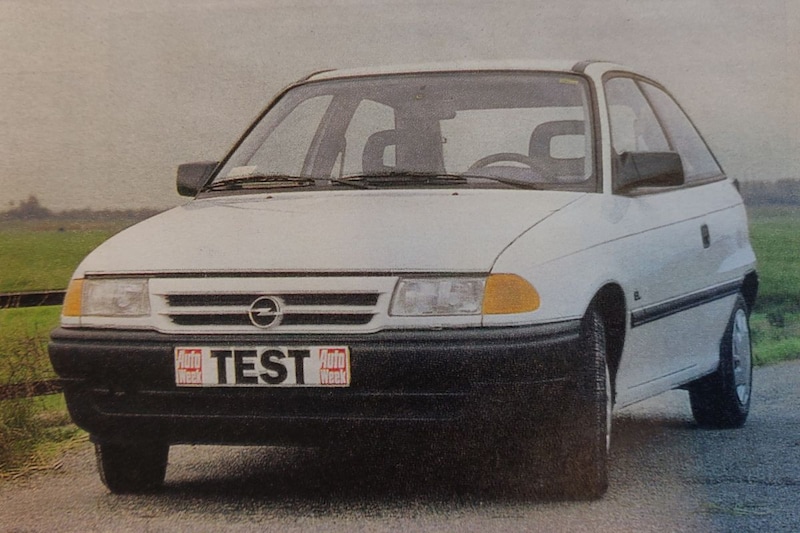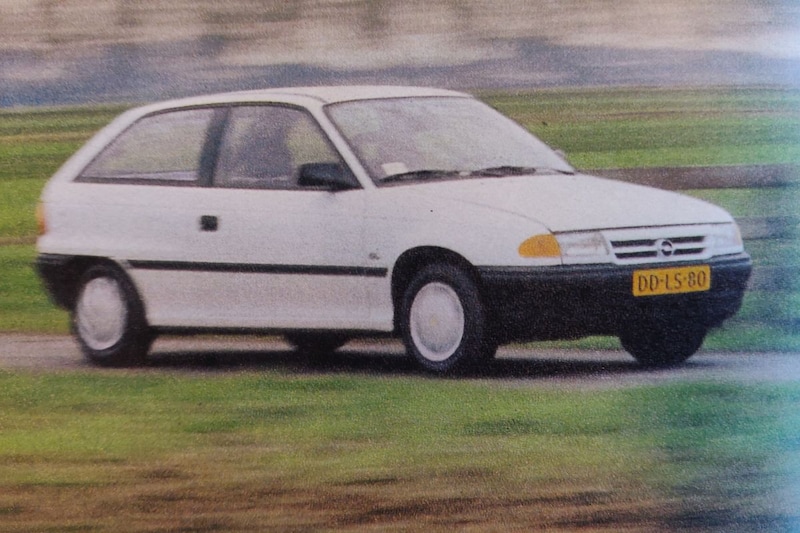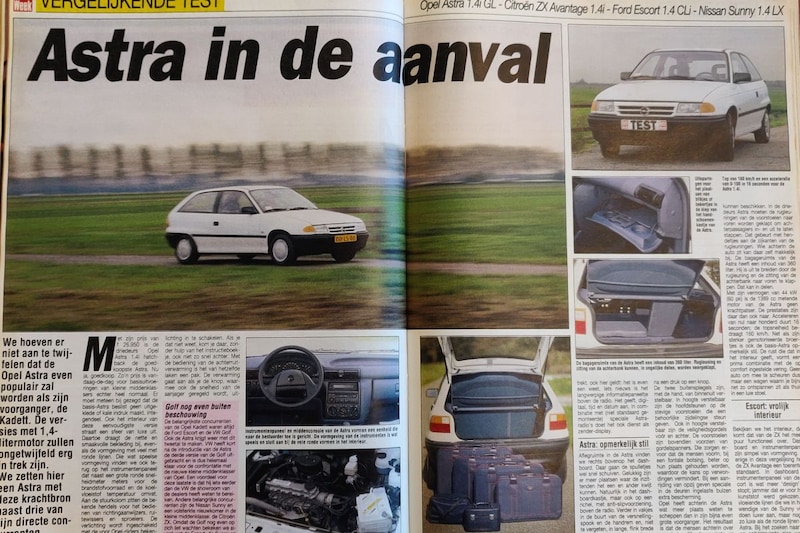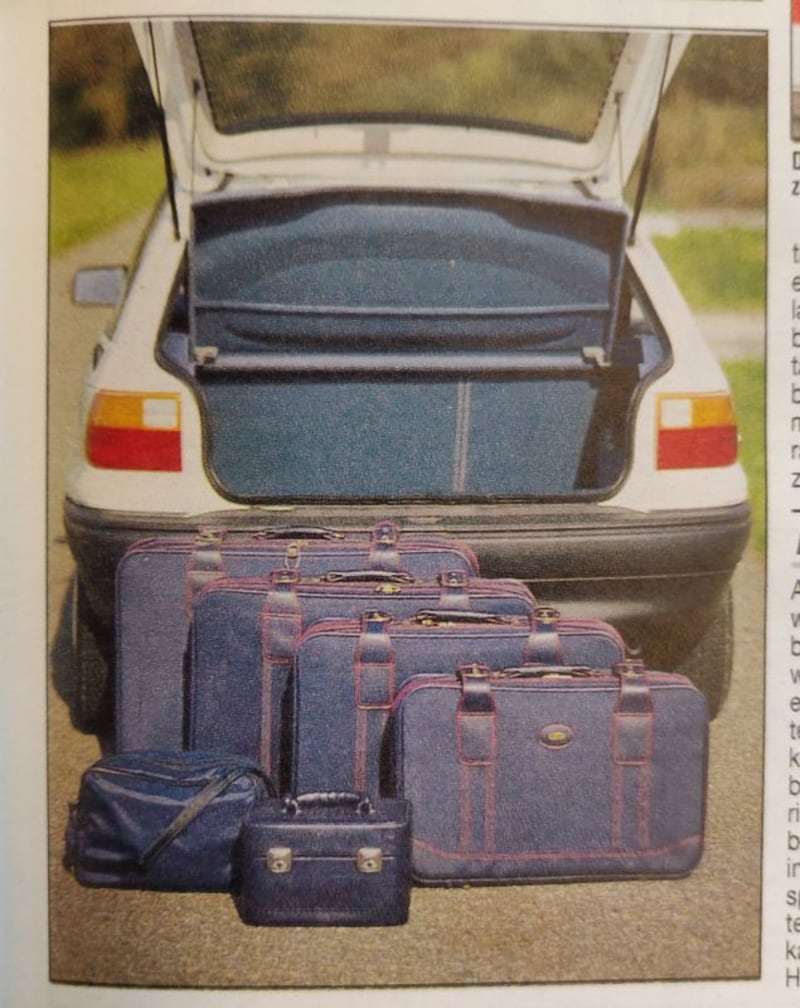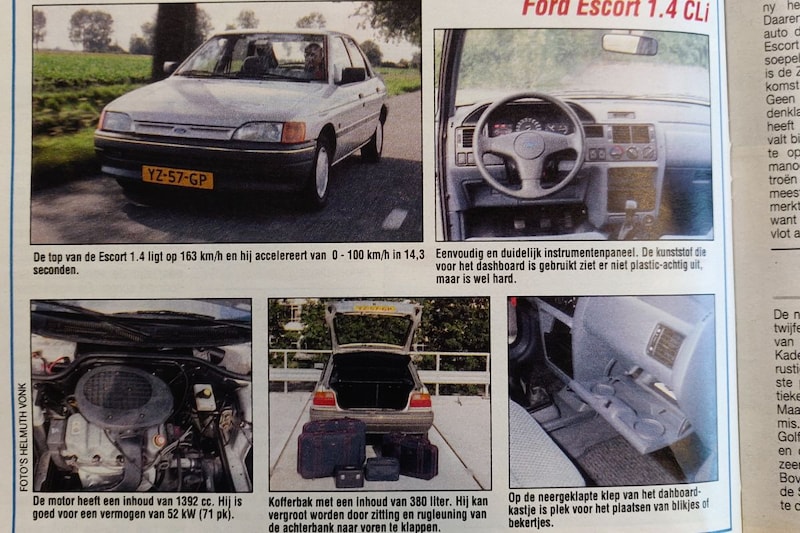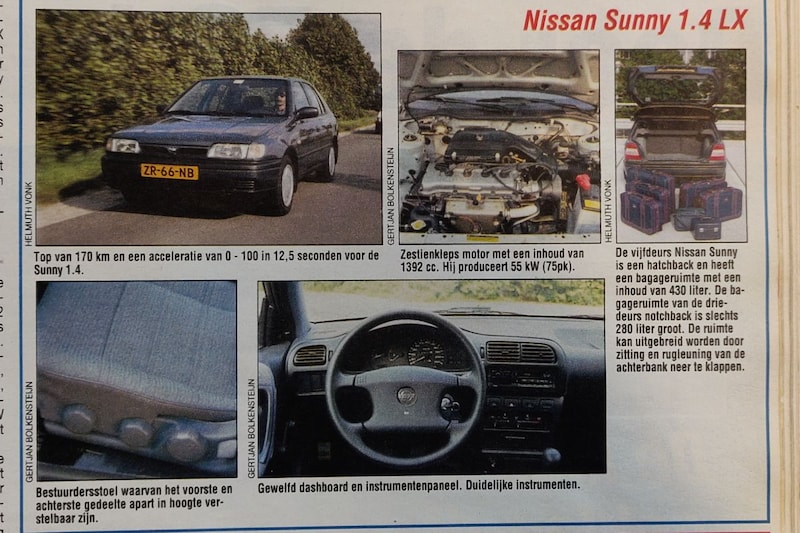The first Opel Astra was immediately promising when it was introduced. With a new name and much more modern shapes, this Opel competed in the hard-won compact middle class. We discovered exactly 30 years ago whether the Astra really had enough in-house to put the competitors to the test.
It was quite something that Opel dropped the name Kadett almost intertwined with the Netherlands in the early 1990s. ‘Never change a winning team’ you might say. Nevertheless, the Germans managed to continue the success under the name Astra. We already suspected that when we drove the first Astra for the first time, although the competition was not tender at that time. For example, Ford had just launched a new Escort, Citroën came up with the surprisingly sober ZX and Nissan also had a very modern entry in the compact middle class with the Sunny. High time to put the Astra next to those opponents.
To start with: how did you like the Opel Astra itself? Well, pretty good. The Astra felt modern and looked modern. That already started with boarding. As in the Kadett, the central control panel was pleasantly oriented towards the driver and, moreover, it looked contemporary due to the many round shapes. The seats also felt sturdy and offered considerable lateral support. Once on the road with the Astra, another major development step compared to the Kadett was noticeable: it was significantly quieter on board the Astra. Even more positive? Of course. Even though the Astra was not really much bigger than the last Kadett, there was remarkably more head and legroom in the back. All in all, not much to complain about.
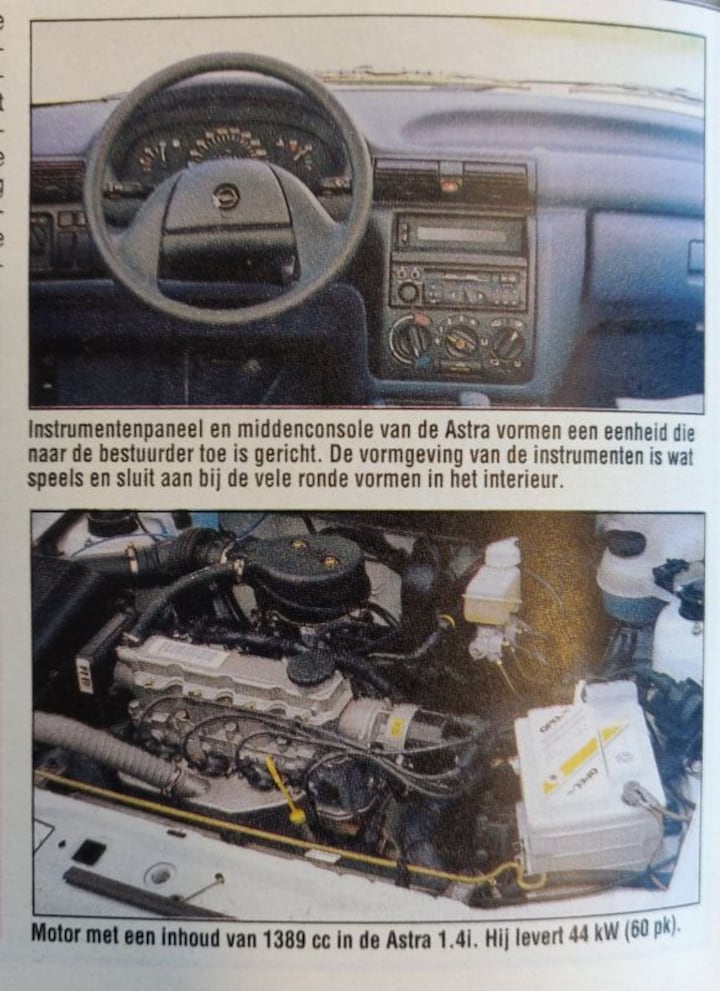
Yet there was something that was a bit disappointing in the tested Astra: the engine. Not that there seemed anything fundamentally wrong with it, the block did its job fairly quietly, only that ‘quietly’ also applied to the pace at which the Astra was allowed to move through the 1.4. He was not fast with that: accelerating from 0 to 100 km/h took at least 16 seconds. In that respect, the Citroën ZX already did a lot better. He needed 13.7 seconds for that with his 1.4. However, the ZX was a bit tighter than the Astra in terms of luggage space, although sliding the rear seat forward in its entirety for more luggage space was a handy extra. The height-adjustable handlebars were also a plus for the ZX. Compared to the Astra, we found the Ford Escort more positive in terms of interior design. Although the dashboard in the Astra also looked modern, that of the Escort looked a bit more cheerful. Especially if you compared that with the fairly straightforward copy in the ZX. However, the 1.4 from Ford was clearly noisier than that of the Astra, which also applied to that of the ZX.
But wait, wasn’t there a Nissan Sunny? Of course. The Opel Astra also had a lot to fear from a Japanese angle. The Sunny was in fact still relatively new and you could tell by looking at it. Especially in the interior, which looks retroactively perhaps the most modern of all four cars. Where the Sunny especially excelled, however, was the technology. Like the Astra, ZX and Escort, the tested Sunny had a 1.4, only the Japanese was a lot more sprightly than its competitors. With 12.5 seconds from 0 to 100 km/h it was certainly not a streaker, but it was the fastest of the bunch. It was therefore a sixteen valve, unlike the others. Not entirely unimportant: the engine noise was significantly less present than with the ZX and Escort. The Sunny was also spacious, with 430 liters of luggage space. Nissan had done its homework well.

Which of the four you should go for, we left in the middle. It was clear that the Astra was a ‘worthy heir to the throne’ and certainly an interesting option next to the competitors. This would also be apparent from the sales figures: the Astra became by far the most successful car of this group. However, one competitor came very close in that regard: the Volkswagen Golf III. However, it was not yet available at the time of this test.
– Thanks for information from Autoweek.nl
